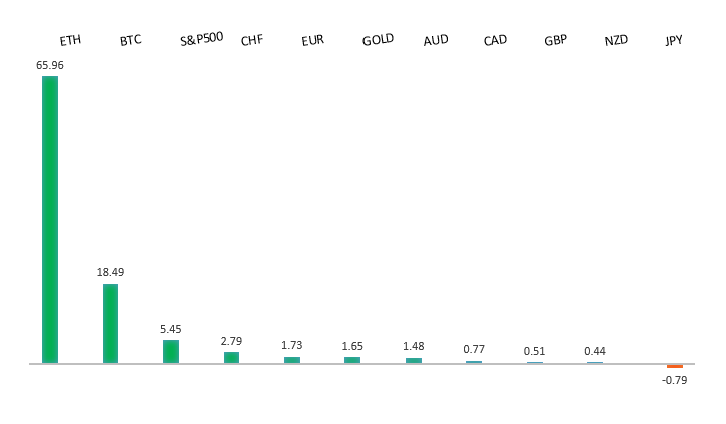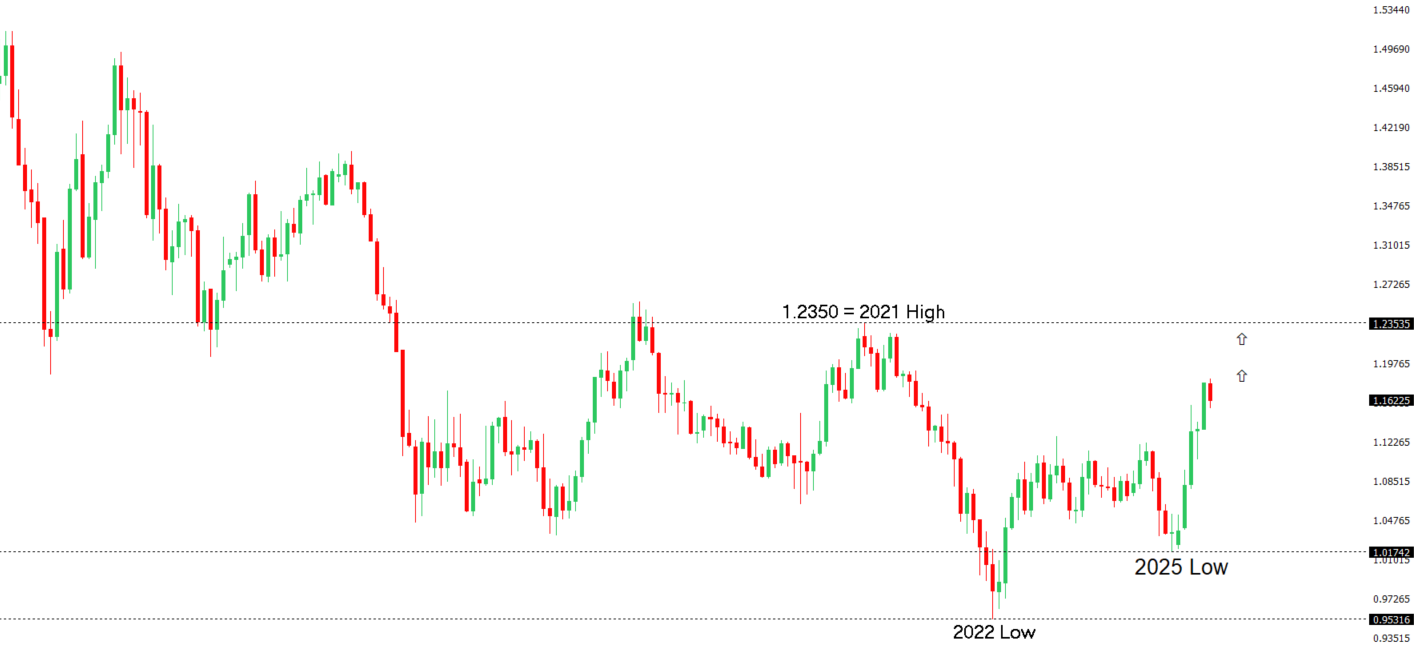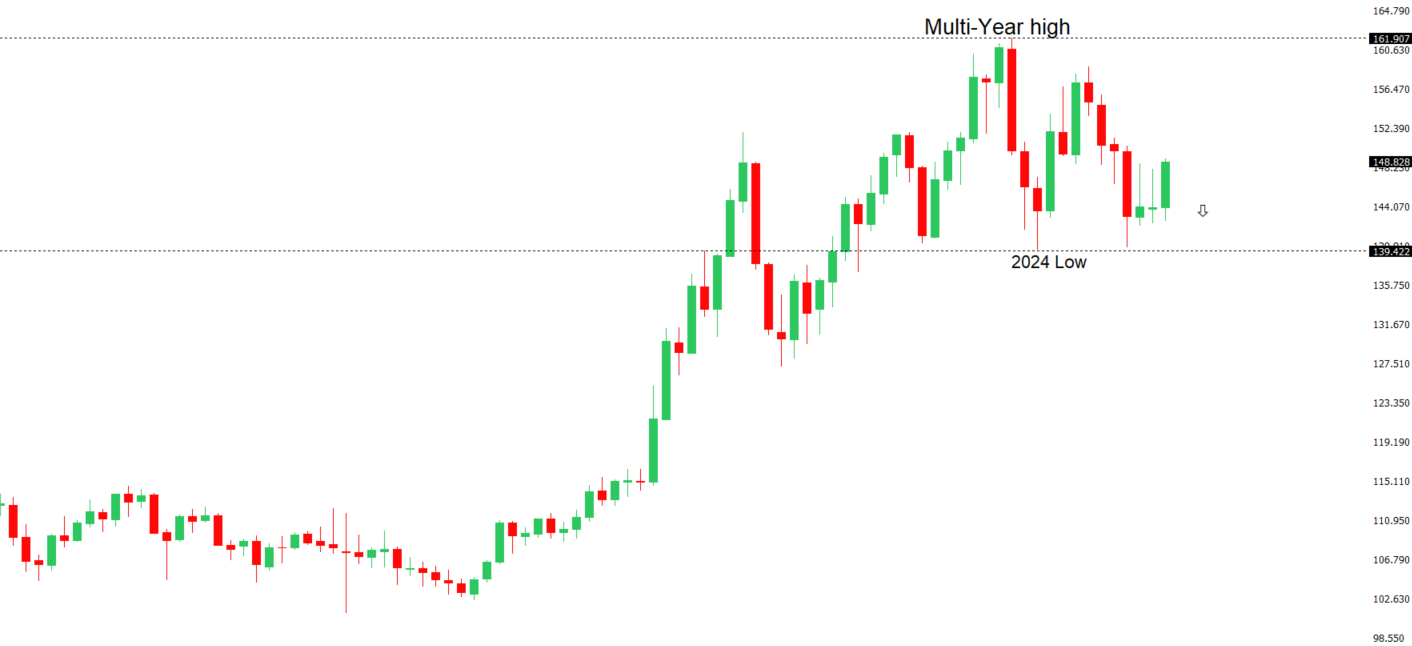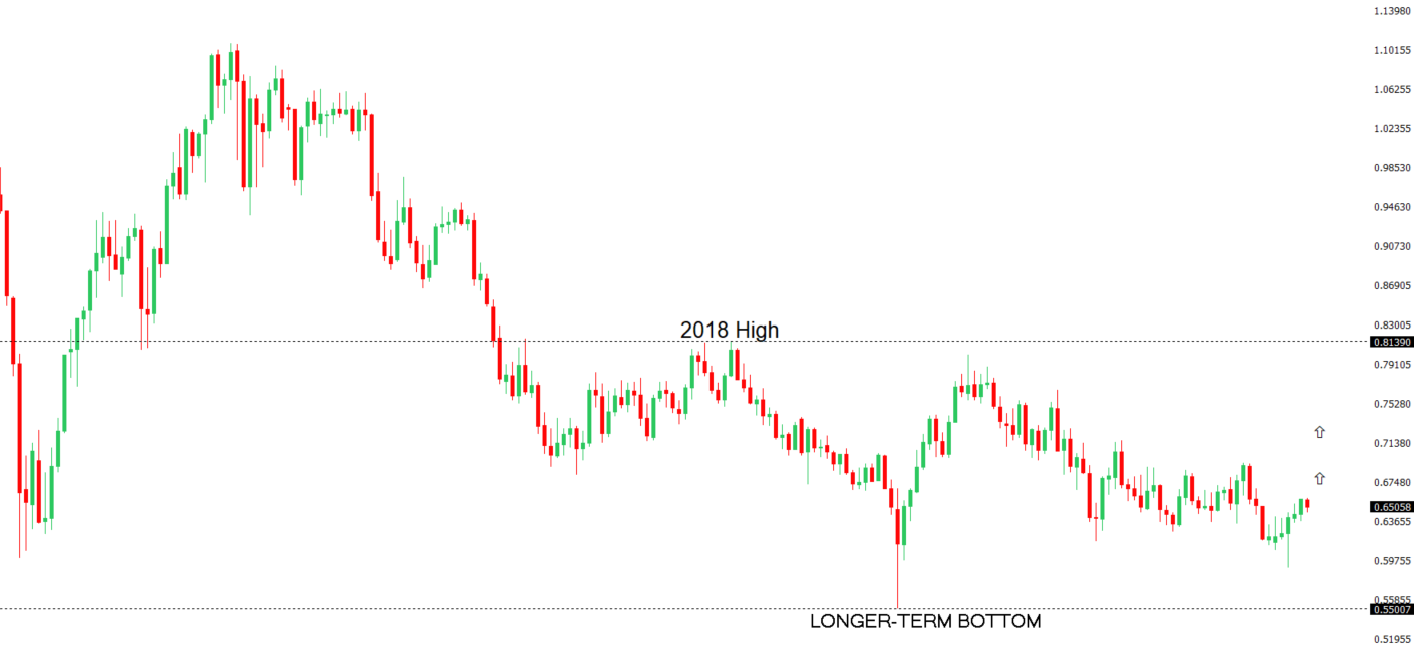 | ||
| 23rd July 2025 | view in browser | ||
| Dollar dips as politics cloud Fed picture | ||
| The dollar extended its slide on Tuesday, weighed down by soft U.S. regional data and renewed political pressure on the Fed reinforcing the market’s dovish bias. | ||
| Performance chart 30day v. USD (%) | ||
 | ||
| Technical & fundamental highlights | ||
| EURUSD: technical overview | ||
| The Euro has broken out from a multi-month consolidation off a critical longer-term low. This latest push through the 2023 high (1.1276) lends further support to the case for a meaningful bottom, setting the stage for a bullish structural shift and the next major upside extension targeting the 2021 high at 1.2350. Setbacks should be exceptionally well supported ahead of 1.1000. | ||
 | ||
| R2 1.1800 - Figure - Medium R1 1.1766 - 8 July high - Medium S1 1.1557 - 17 July low - Medium S2 1.1446 - 19 June low - Strong | ||
| EURUSD: fundamental overview | ||
| The ECB’s 2Q25 Bank Lending Survey indicates stabilized lending conditions in the euro area, with interest rates no longer significantly impacting firm loan demand and rising mortgage demand suggesting a more accommodative ECB policy, especially after the deposit rate dropped to 2.00%. One European bank notes the ECB may resume rate cuts if U.S. tariffs exceed 20% post-August 1, but could hold steady if tariffs fall to 10-15% with limited retaliation, awaiting clarity on EU-U.S. trade. Markets anticipate the ECB will maintain rates on Thursday but may signal a slight dovish tilt due to tariff uncertainties and the euro’s strength, while a potential U.S.-Europe trade deal could reduce downside risks, possibly stabilizing ECB rates as they approach a neutral zone. | ||
| USDJPY: technical overview | ||
| There are signs of a meaningful top in place after the market put in a multi-year high in 2024. At this point, the door is now open for a deeper setback below the 2024 low at 139.58, exposing a retest of the 2023 low. Rallies should be well capped below 152.00. | ||
 | ||
| R2 150.00 - Psychological - Strong R1 149.19 - 16 July high - Medium S1 146.30 - 22 July low - Medium S2 145.75 - 10 July low - Strong | ||
| USDJPY: fundamental overview | ||
| President Trump announced a trade deal with Japan, involving a $550 billion Japanese investment in the U.S. and 15% tariffs on Japanese imports, with provisions for increased U.S. automobile and agricultural exports to Japan. Details on the elimination of existing 25% tariffs on Japanese cars remain unclear, and the yen faces potential further weakness as markets await more information. Political instability in Japan, following the LDP-Komeito coalition’s loss of majority in the upper house, may push Prime Minister Ishiba to resign, complicating the Bank of Japan’s plans for rate hikes. The LDP will meet on July 31 to discuss election results and Ishiba’s leadership, while opposition parties advocate for fiscal stimulus and looser monetary policies, potentially pressuring the BOJ to delay tightening despite rising inflation. | ||
| AUDUSD: technical overview | ||
| There are signs of the potential formation of a longer-term base with the market trading down into a meaningful longer-term support zone. Only a monthly close below 0.5500 would give reason for rethink. A monthly close back above 0.7000 will take the big picture pressure off the downside and strengthen case for a bottom. | ||
 | ||
| R2 0.6596 - 11 July/2025 high - Strong R1 0.6576 - 15 July high - Medium S1 0.6454 - 17 July low - Medium S1 0.6373 - 23 June low - Strong | ||
| AUDUSD: fundamental overview | ||
| The Reserve Bank of Australia maintained the Official Cash Rate at 3.85% for the third time in four meetings, with six of nine members voting to hold rates, favoring a cautious approach to monetary policy. The RBA noted that policy remains modestly restrictive, awaiting confirmation that inflation is sustainably nearing its target, with upcoming second-quarter inflation data likely pivotal for a potential rate cut in August. Weak jobs data, showing unemployment rising to 4.3%, has increased expectations for an August cut, with markets anticipating 66 basis points of cuts by year-end. Additionally, the RBA believes tariff fears have peaked, and China’s stable economy reduces pressure for immediate stimulus, potentially limiting Australian dollar strength in the near term. | ||
| Suggested reading | ||
| Jerome Powell Has Already Fallen to Stalkers, J. Calhoun, Alhambra (July 20, 2025) The Nvidia of crypto, S. McBride, RiskHedge (July 21, 2025) | ||


